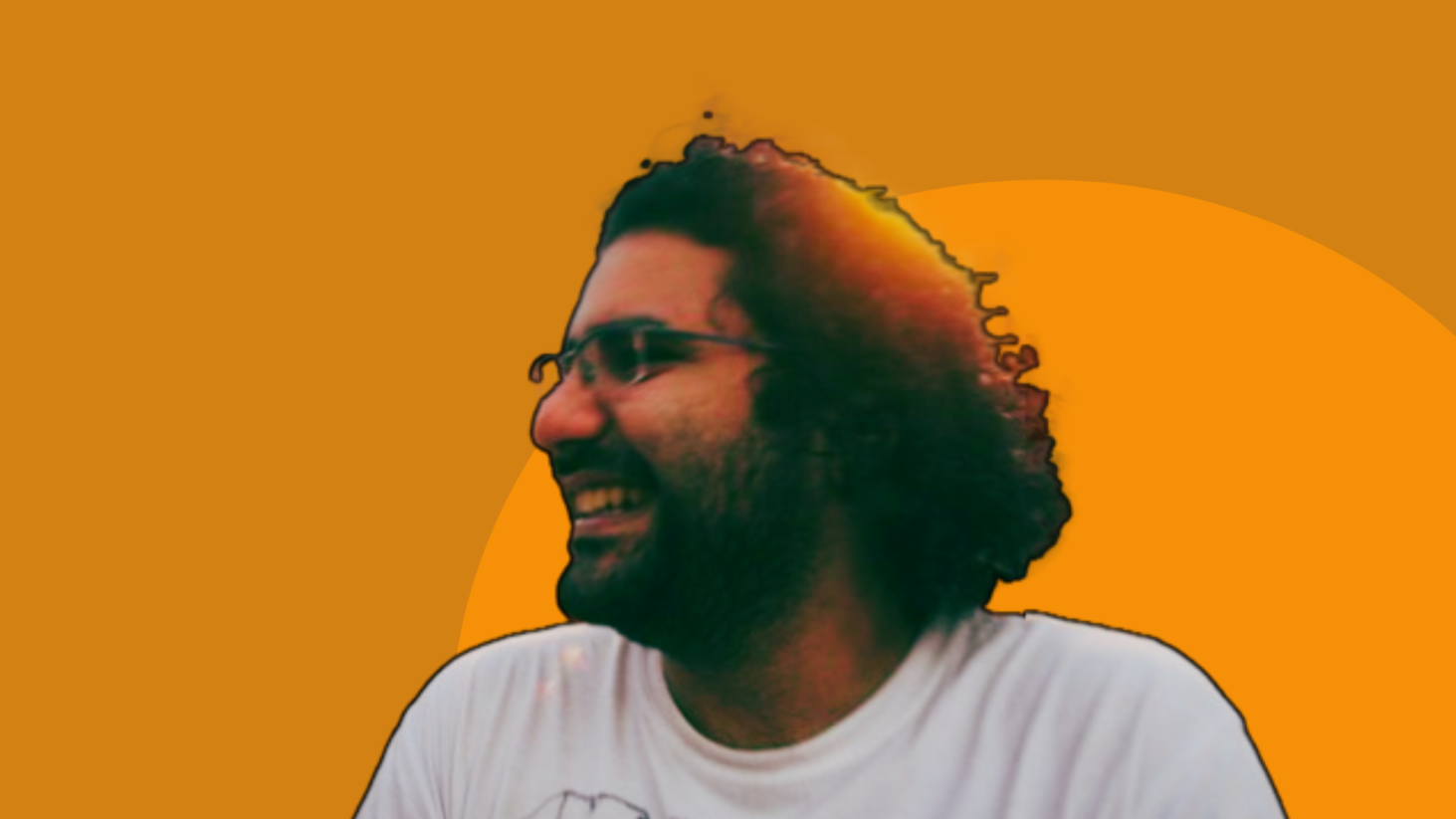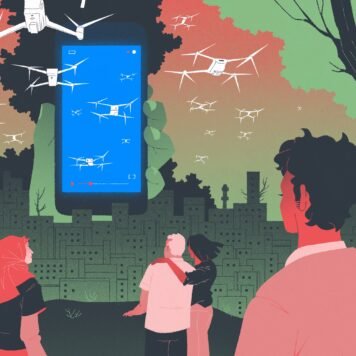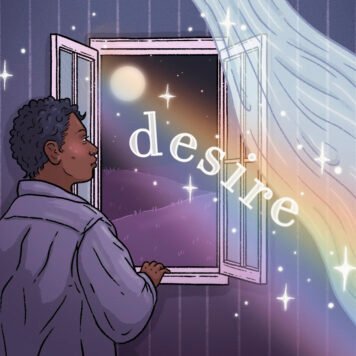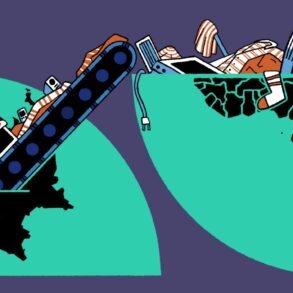Two days ago, British-Egyptian activist and writer Alaa Abdel Fattah was supposed to walk free from the Wadi El-Natrun mega-prison complex in Egypt, located over 100 miles outside of Cairo.
September 29th marked the completion of Alaa’s five-year sentence on ‘terror-related’ charges – the Egyptian military state’s choice weapon for smothering all forms of political life. It was supposed to be Alaa’s very last day in prison – perhaps the day he would board a plane to Britain and end his long sojourn as Egypt’s most high-profile political prisoner.
Alaa has been in and out of detention on various inventive charges – stretched over four regimes – since 2011. One of these charges is “spreading false news”, in which Alaa was criminalised for re-sharing a Facebook post about state torture. Another is participating in a protest, as Egypt’s anti-protest laws have managed to effectively outlaw all public demonstrations. Perhaps the most spurious is Alaa’s terrorism charge, one that soon became synonymous with any dissident political activity following the 2013 military coup.
Instead, 29th September passed as another tortuous day in captivity. According to Alaa’s family, neither Egypt’s public prosecutor nor Britain’s Foreign Secretary took action to secure Alaa’s release. His release date was arbitrarily pushed back another three years, keeping him imprisoned alongside 120,000 other prisoners in military leader El-Sisi’s Egypt.
Human rights campaigners have long characterised Egypt’s scores of prisoners through the Prisoner of Conscience framework – peaceful protesters and activists locked up for expressing their politics. Similarly, when Britain’s Labour party was in opposition, they frequently used Alaa’s plight as a human rights ‘talking point’ and cast his case as a violation of international law. Now in power, Labour has remained conveniently silent.
For many advocacy and non-governmental groups, as well as occasionally international governments, Alaa’s warrant for freedom has become premised on his individual human right to a fair trial, to adequate detention length and conditions, and to other juridical-based rights.
But as Alaa enters nearly 11 years behind bars and prison construction in Egypt booms under El-Sisi’s rule, how does an attachment to legalised frameworks in prisoner release campaigns fail to capture the imperial violence underpinning Egypt’s prisons? Alternatively, what can abolitionist theory offer our movements by way of explaining the economic motives behind Egypt’s prison expansion? And what does Alaa teach us about ‘stretching’ abolition into non-Western geographies – where colonialism is not past but present?
Politicising prisoners, depoliticising the state
To Egyptians who live in the abortive margins of El-Sisi’s counterrevolution, Alaa exists in many realities. One is the material reality of his incarceration, subject to the daily violence of prison. Another is the symbolic Alaa, who has come to encompass all of Egypt’s revolutionary hopes and oppressions in one.
And then there is Alaa’s discursive existence, which has carefully built the intellectual outline of my journey into abolition (despite Alaa never using this exact term once). In his years of incarceration, Alaa has written over 50 essays on the 2011 revolution, its aftermath, his imprisonment and its meaning. Many essays were smuggled out of prison and later published by his family and friends.
Alaa’s searing words open up an entire world beyond juridical struggle. During a visit in 2012 to Gaza, described by Alaa during his visit as “a prison in the true sense of the word”, he wrote of the solidarity between Palestinian prisoners undertaking a group hunger strike: “How can we allow ourselves to be overcome with weakness, prisoners to our victory, when prisoners are achieving victory in their confinement?” He tells us of the freedom that can exist in a horizontal solidarity in-between prisoners, not solely mediated between prisoners and the state.
Later in 2014, he wrote of his family’s experience while he was in pretrial detention: “My family’s energy has been torn apart by two prisons, and my father’s heart has been broken by two trials.” Continuing to explain the anguish that imprisonment enacts both inside and outside the prison, Alaa writes: “They snatched me from my son Khaled’s arms who is still struggling to overcome the psychological impact of my first imprisonment… there’s no dignity for a body deprived of the embrace of its loved one.”
Alaa’s words remind us that the binary of freedom-as-release fails to capture other dimensions of struggle. This includes the decimation of a family via the imprisonment of one of its members, the unfreedom of release into a still-violent society, and that imprisonment is a group, not individual, suffering.
If Alaa shows us that victory can exist in the most confined spaces and injustice can endure outside prison walls, then the formulaic obsession with release-as-justice poorly quantifies the meaning of suffering, solidarity and freedom. Alaa urges our movements to ask for not only legal reform, but for “what’s richer, what’s more beautiful, what’s more compassionate, what’s better.” The perseverance of Alaa’s story from within a site that intended to effectively disappear him must drive our variegated anti-carceral movements to recommit to a solidarity that is one part “undoing” – unravelling the causative factors of policing and prisons – but even more parts “doing” – imagining new social relations, political visions, and systems to safeguard life.
Still, the uptick in prisoner freedom campaigns waged within the confines of the law is not a random choice. Highly legalised and internationally-led approaches are often the only recourse available to activists in Egypt, especially within the wholesale decimation of the political left following El-Sisi’s military coup in 2013. It remains likely that an end to Alaa’s suffering will come from continued recourse to imperfect human rights frameworks. We cannot afford to be unerringly dogmatic in our lines of struggle when thousands could breathe easier with minor legal reforms.

Abolition as a socio-economic window into Egypt
But legal approaches are not the only form of struggle that exist. Classical abolitionist methodologies can serve as a helpful segue to unravelling the causative factors of incarceration, pushing us from the individually legalistic to the structurally socio-political.
Classical abolition tells us that, in its earliest form, the prison was used to help secure private property for the landlord class in England by enclosing access to the commons. Much of the increase in crime in England during this time was related to charges of burglary and petty theft and was, unsurprisingly, coeval with increased fencing of swathes of common land, the dismissal and eviction of farm labourers, and the erasure of previously common sources of subsistence. The original imaginary of the prison was thus unrelated to criminalising lawlessness but rather shifting the meaning of lawlessness, serving as a means of protecting the resources of a particular class.
Similarly in Egypt, the prison serves as a means of facilitating the unfettered accumulation of the military class. In the face of staggering levels of foreign capitalist infiltration, currency devaluations that are annihilating the working class, and the near-complete militarisation of the economy, the prison becomes an easy depository for removing the poorest ‘undesirables’ from society. Imprisonment absolves the state from engaging with the neoliberal causes of Egypt’s mass poverty and halting the aggressive austerity demands of its international debt relief packages.
The prison also functions to quell activists who vocally dissent to the state’s activities – but as Alaa has said in the past, many are imprisoned who never protest and whose mere class existence is deemed a threat to the military’s economic vision, or lack thereof.
Through tracing this thread, we begin to understand why prison expansion is one of the regime’s favourite economic ventures: a low-yield construction project. El-Sisi’s economic reign is marked by a fatal obsession with mega-construction deals that rely on heavy foreign borrowing and reward colossal contracts to favoured military subcontractors. It is thus unsurprising that prison construction has boomed under his rule.
With closed-circuit profit motives enmeshed into the very brickwork of the prison, classical abolition pushes us to abandon the notion that single-case legal advocacy, however symbolic, will build a just and equitable society. We urgently need a praxis that questions how violence is the foundation and fodder of El-Sisi’s counterrevolution, as inaugurated with the massacre of over 900 protestors in the first month of his 2013 coup.
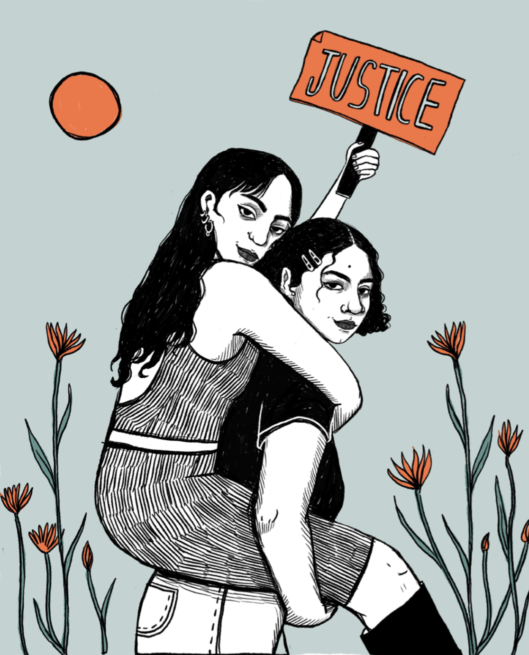
Join our mailing list
Sign up for shado's picks of the week! Dropping in your inbox every Friday, we share news from inside shado + out, plus job listings, event recommendations and actions ✊
Sign up for shado's picks of the week! Dropping in your inbox every Friday, we share news from inside shado + out, plus job listings, event recommendations and actions ✊
Alternative praxis in the Free Alaa movement
This alternative abolitionist praxis is already well and alive. It can be found in the enduring kinship and radical hope that Alaa’s family has sustained while in diaspora in Britain. There is no denying that the prison has turned Alaa’s life into a daily stasis of endless suffering. But Alaa’s indefatigable family – his mother, his two sisters, his wife, his cousins, his thirteen-year-old son – have animated a parallel reality of an abolitionist love that refuses the stagnation of the prison.
Through their ceaseless pressuring of Britain’s government, their founding of the transnational ‘Free Alaa’ campaign, their coalition-building with the families of other prisoners, their galvanising of an entire protest movement at COP27 in Egypt two years ago, their encampment outside the British Foreign Office, and their profound love, Alaa’s voice has continued to be heard globally. Through the remarkable feat of the publication of Alaa’s luminous words from within prison, Alaa’s suffering is made an obligation of a whole instead of a one.
This praxis further exists in the climate movement’s interlinking of prisoner precarity to planetary precarity, as seen during COP27; whenever Alaa’s struggle is evoked on picket lines at UK universities; and in speeches at Palestine protests across the globe. Most of all, this praxis is embodied in Alaa’s political voice that gives meaning to the abolitionist strategy of living the future in the now, to “haunt the dreams of your comrades, and the nightmares of your enemies; live in a future that never came – be a spectre, a memory, and a herald.”
‘Stretching’ mainstream abolition into imperial terrain
Many would call Alaa’s dedication to the production of a dissident critique an example of classic abolitionist struggle, from his interrogation of the prison’s function to his unfaltering belief that another world is possible. But I believe Alaa’s case delivers us something so much more powerful than a mere alignment with existing theory: a ‘stretching’ of abolition to account for the foundational role of Empire within mass incarceration in Egypt. This follows suit to Frantz Fanon’s idea of ‘stretching’ theory formulated in the West to better attenuate to colonial and post-colonial subjectivities. For Fanon, the work of ‘stretching’ implies carving out space for anticolonial contexts to add to and ultimately transform canonical theory.
We know that abolitionist theory is advanced for and by the most marginalised. But while that theory sometimes makes the links between the prison-industrial complex and the military-industrial complex, abolition as a liberation methodology has tended to centre anti-carceral struggles primarily in the Global North (and other purportedly liberal geographies). I believe that the limited deployment of abolition can only provide an incomplete approach for challenging Egypt’s imperial carceral regime, unless stretched.
On one hand, some of abolition’s foundational thinkers continue to spew imperial logics (see Mariame Kaba’s disappointing ‘return the hostages’ exchange and Angela Davis’ veiled endorsement of genocidaire Kamala Harris). This is a violently skewed abolition that views incarceration in the Global South as peripheral to, if not constitutive of, freedoms in the North. That this active complicity has arisen from theorists ‘from above’, who have ascended into an academic demagoguery which rewards attachment to Empire, is not particularly surprising.
On the other hand, these intellectual investments in Empire scarcely reflect the fact that abolition is a struggle that is lived and suffered by a mass in prisons, on the streets, and in geographies that are necessarily as globalised as Empire’s reach. It is a struggle that is multipolar; owned by the masses; attuned to local specificities; and most of all, constantly in motion. It is within this precious abolition ‘from below’ that I place hope and potentiality for an anticolonial stretching of our theory and solidarities.
‘Stretching’ abolition in genocide
Egypt’s role as a mainstay in the constellation of US imperialism in the Arab world cannot be understated, especially when scrutinised alongside its carceral expansion. Since Egypt’s normalisation of diplomatic relations with Israel in 1980 at the behest of the US and the opening of its economy to foreign capital, successive governments have solidified into a neoliberal authoritarianism, or what Egyptian writer Maged Mandour describes as a ‘militarised capitalism’.
This authoritarianism is both self-reproducing and leverageable. The more US and UK foreign aid, EU development funds, and private foreign investment that Egypt receives, the more it can bankroll its carceral apparatuses, whose growth it then cyclically justifies on the basis of protecting foreign projects.
In the past year, Egypt – which borders the Gaza Strip – has been especially rewarded for its outstanding compliance to US imperial dictates. It has enforced the lethal blockade on the Gaza Strip alongside Israel, restricted the entry of humanitarian aid, remained silent after Israel killed an Egyptian soldier in ‘border crossfire’ and even allowed Israel to move towards occupying the Philadelphi Corridor in Rafah. Egypt’s receipt of a colossal $1.3 billion in US military aid this past month testifies to the embeddedness of imperial acquiescence within the financing of its carceral regime. Only last year, ‘human rights concerns’ nearly limited the provision of Egypt’s full aid package.
Such concerns become overridden in times of genocide and its abetment.
Inevitably, towards Palestine
In sum, to maintain Egypt’s advertised role as a stable and pro-Western military power in the region, the trumped-up production of constant domestic threats becomes crucial to warrant and reinforce the state’s security capabilities. Herein lies the risk of infinite prison terms and the urgent need for a renewed solidarity. Just as Egypt’s record incarceration rates may give the West nominal pause over the liability of human rights abuse, so too do they demonstrate proof of a constant enemy. The stretching of abolition to imperial geographies makes clear that the release of the majority of Egypt’s prisoners remains unattainable for as long as the Western-Israeli imbrication in the Arab world persists.
And it’s critical to emphasise: it’s not that the West begrudgingly accepts an autocratic military state in exchange for one more pro-Israeli broker in the region. The US actively invests in architectures of systematic oppression because while the Egyptian state has betrayed the Palestinian cause, it knows that Egypt’s people have not. Egyptians have amply demonstrated that left unfettered by authoritarian constraints, they would unimpeachably harangue the United States into permanent regional exile.
A more critical abolition shows us that Alaa’s abiding solidarity with Palestine is by no means incidental. It is because the age-old Arab adage of ‘the road to freedom runs through Palestine’ rings ever louder from the silence of a prison cell. Alaa expands our understanding of the prison as a site that materialises the US grip on the region, a regime-stabilising tool bred and held by national and international violence, and a rallying cry for an anti-imperial abolitionist solidarity that must be as transnational as it is contextualised.
Now, more than ever, abolitionists are duty-bound to expand their geographic horizons beyond the West and take up Alaa’s calls for another world.
What can you do?
Protest:
- British residents: use this template to write to your MP to free Alaa and urgently pressure Foreign Secretary David Lammy to speak up for Alaa.
- Join Alaa’s sisters, Mona and Sana’a, outside of the British Foreign Office in London. Mona and Sana’a have announced that they will be protesting at the Foreign Office following the extension of Alaa’s sentence into 2027 and have invited the public to join them. Click here for more information.
- Organise your own solidarity statement within your collective, group or organisation, that calls for Alaa’s immediate release and an end to US imperialism in Egypt and the Arab region.
Follow:
- The @FreeAlaa campaign, and keep an eye out on other actions, protests, and solidarity call-outs.
- @EgyptianDiasporaResists
Read:
- Alaa’s own political thought in his book, ‘You Have Not Yet Been Defeated’. The book, which is a collection of Alaa’s essays, was compiled, translated and published by his friends and family in 2021 while he was in prison.
- Alaa’s essay from 2021, ‘Palestine on my mind’ and Palestinian activist Mohammed El-Kurd’s 2022 response during Alaa’s seven-month hunger strike, ‘Alaa on my mind’ on the interlinkages of Palestinian and Egyptian solidarity.
Listen:
- Haymarket Book’s podcast episode from 2023, ‘Rising in Solidarity: Palestine and the Arab Revolution‘ explains the enduring solidarity with Palestine in masses across the Arab World.

